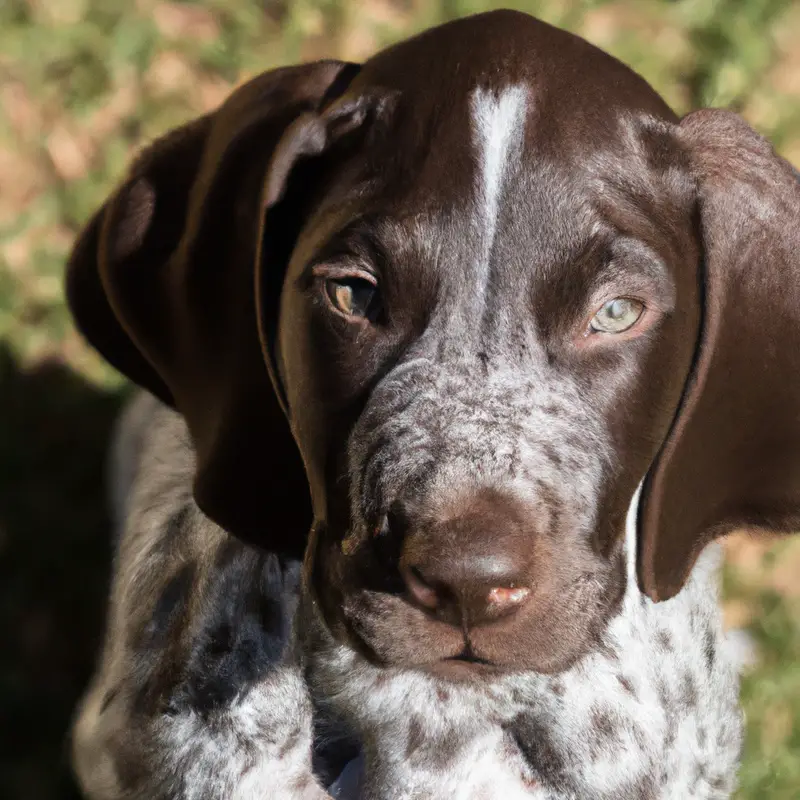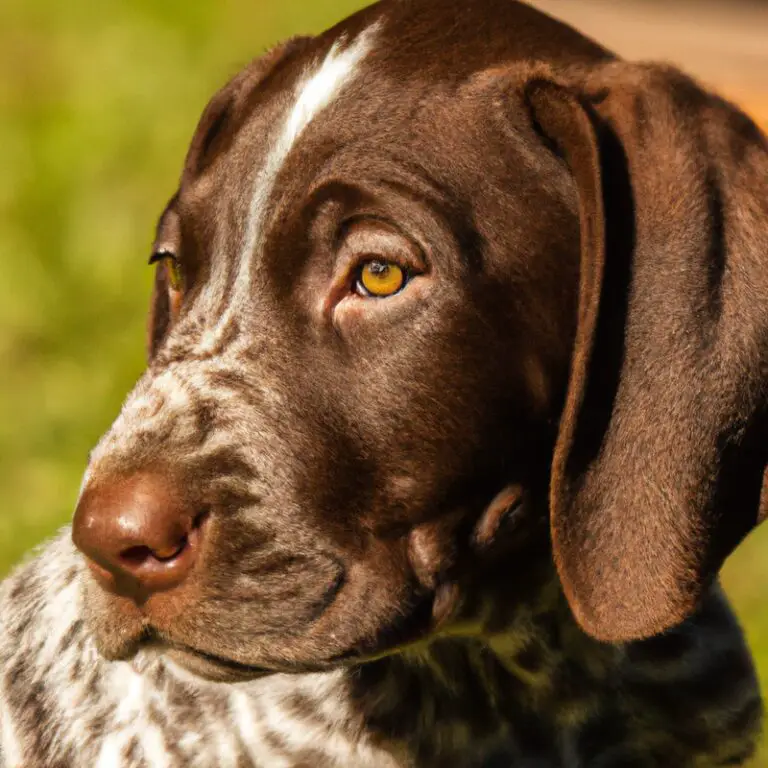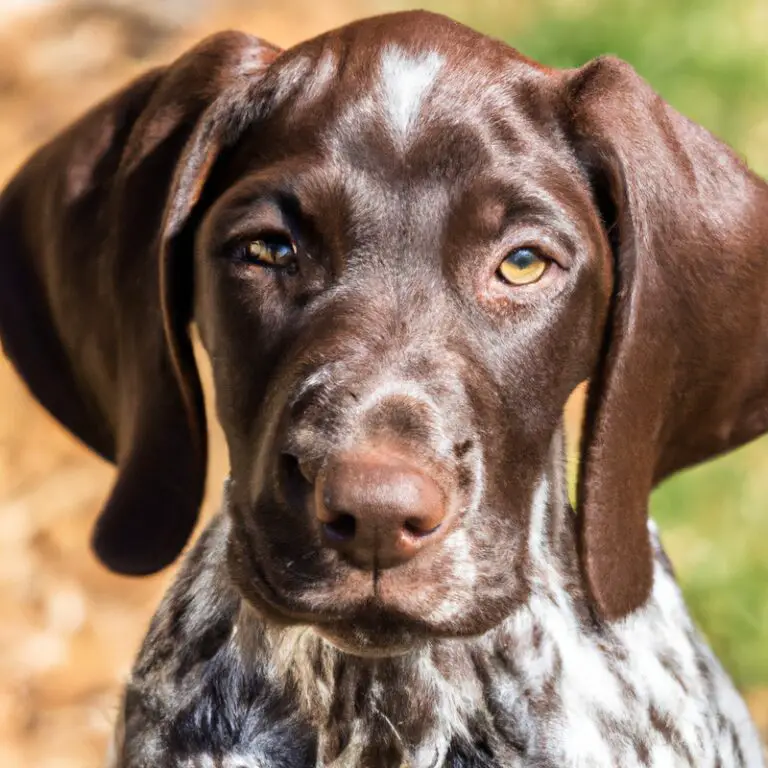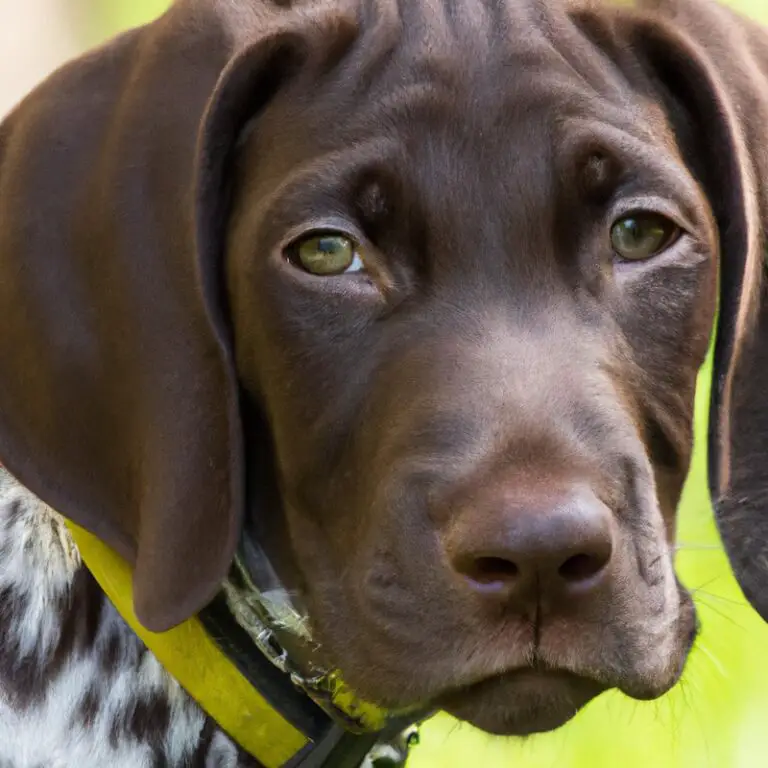How Do I Introduce My German Shorthaired Pointer To New Environments?
Key Takeaways:
- Gradually expose your German Shorthaired Pointer to new environments to avoid overwhelming them.
- Use positive reinforcement and treats to reinforce positive associations with new environments.
- Provide a safe space, such as a crate or designated area, for your German Shorthaired Pointer to retreat to in unfamiliar environments.
- Remember that each dog is unique, so be patient and understanding as you introduce your German Shorthaired Pointer to different environments.
Introducing your German Shorthaired Pointer to new environments can be an exciting yet crucial journey. But how do you ensure a smooth transition for your furry friend?
As a seasoned dog enthusiast and German Shorthaired Pointer owner, I understand the importance of acclimating these lively, intelligent dogs to new surroundings.
In this article, we’ll explore the benefits of exposing your pup to fresh experiences and provide practical steps to help you make those introductions a success. We’ll also address common challenges and offer helpful tips to overcome them.
Are you ready to unlock a world of adventure for your German Shorthaired Pointer?
Let’s dive in!
| Step | Description |
| 1 | Start with familiar sounds and smells. |
| 2 | Gradually introduce your German Shorthaired Pointer to new locations. |
| 3 | Bring treats and familiar toys to provide reassurance in new environments. |
| 4 | Allow your German Shorthaired Pointer to explore at their own pace. |
| 5 | Use positive reinforcement to reward positive behavior. |
| 6 | Be patient and give your German Shorthaired Pointer time to adjust. |
| 7 | Consult a professional dog trainer if needed. |
The Importance of Introducing Your German Shorthaired Pointer to New Environments
Why is it important to introduce your German Shorthaired Pointer to new environments?
Introducing your German Shorthaired Pointer to new environments is important for a few key reasons. Firstly, it helps them become more adaptable and confident in different situations.
Just like humans, dogs can feel anxious or overwhelmed in unfamiliar settings.
By gradually exposing them to new places, you’re helping them build resilience and reducing the likelihood of fear-based behavior. Secondly, introducing your dog to new environments allows them to experience a wider variety of sights, sounds, and smells.
This sensory stimulation is crucial for their mental and social development.
It keeps their curious minds engaged and helps prevent boredom or restlessness. Lastly, introducing your German Shorthaired Pointer to new environments is an essential part of their socialization process.
Exposing them to different people, animals, and places from an early age helps them develop positive associations and good behavior.
This can make outings, vet visits, and interactions with other dogs much smoother and stress-free. So don’t hesitate to embark on new adventures with your furry friend!
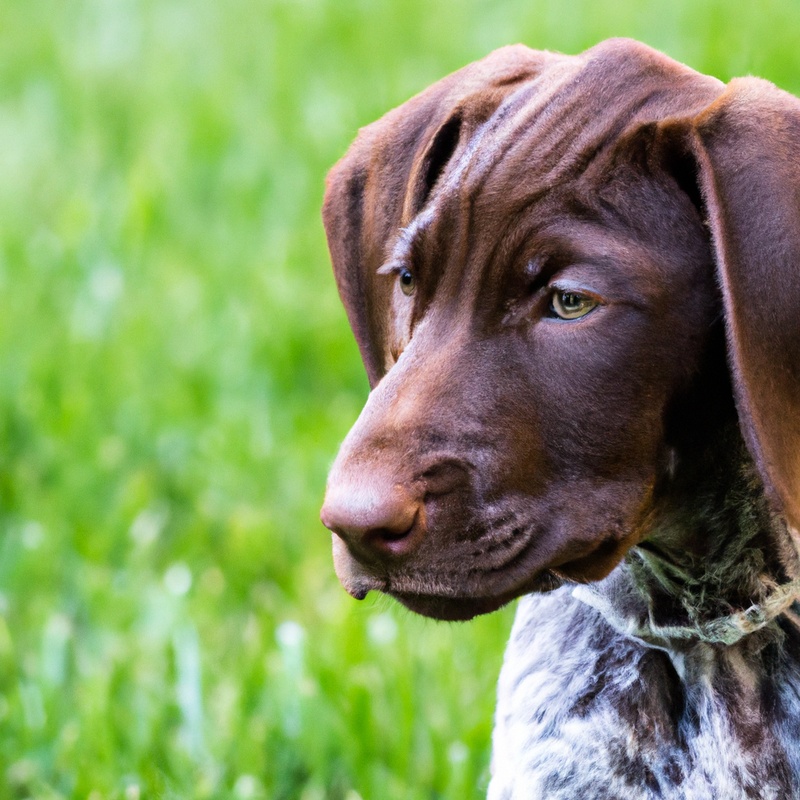
Benefits of introducing your German Shorthaired Pointer to new environments
Introducing your German Shorthaired Pointer to new environments can bring a range of benefits for both you and your furry friend. Firstly, it helps to prevent boredom and keep them mentally stimulated.
Exploring different settings and encountering new smells, sights, and sounds can provide much-needed enrichment for your dog.
Secondly, introducing your dog to new environments promotes socialization. It allows them to meet new people, animals, and situations, helping them develop good behavior and adaptability.
This can be particularly important for a breed like the German Shorthaired Pointer, who thrives on social interaction and needs to feel comfortable in various settings.
Furthermore, exposing your dog to different environments can also improve their overall confidence and resilience. By gradually introducing them to new places, you are teaching them to be adaptable and less anxious in unfamiliar situations.
This can be beneficial in daily life and when encountering new experiences such as vet visits, travel, or meeting other dogs.

Steps to Introduce Your German Shorthaired Pointer to New Environments
Step 1: Start with familiarization in controlled settings
Alright, let’s get started with step one: familiarization in controlled settings. This is an important first step in introducing your German Shorthaired Pointer to new environments.
First and foremost, begin by exposing your dog to new environments in a controlled and familiar setting.
This could be in your own backyard or a quiet area where your dog feels comfortable. Take your time and let your dog explore at their own pace.
Encourage positive experiences by offering treats or praise when they approach new things with confidence.
Step 2: Gradually expose your German Shorthaired Pointer to new sounds and smells
Step 2: Gradually expose your German Shorthaired Pointer to new sounds and smells. One important step in introducing your German Shorthaired Pointer to new environments is to gradually expose them to different sounds and smells.
This helps them adapt and become more comfortable in unfamiliar places.
Start by exposing your dog to mild sounds and smells in a controlled environment, such as your home or backyard. You can play recordings of various noises, like car horns or doorbells, at a low volume.
Similarly, you can introduce new smells by using scented toys or treats.
As your dog becomes more accustomed to these mild stimuli, you can gradually increase the intensity and variety. Take them on short walks in different neighborhoods to expose them to new smells.
Visit parks or cafes to expose them to more diverse sounds.
Remember to observe your dog’s reactions and give them positive reinforcement and rewards when they handle new sounds and smells well. This will help them build positive associations and become more confident in new environments.
Step 3: Introduce your German Shorthaired Pointer to new people and animals
Step 3: Introduce your German Shorthaired Pointer to new people and animals Now that your German Shorthaired Pointer is comfortable in new environments, it’s time to introduce them to new people and animals. This step is important for their socialization and overall well-being.
First and foremost, ensure that the introductions happen in a controlled and calm environment.
Avoid overwhelming your dog with too many new faces or animals at once. Start with one or two individuals or animals, gradually increasing the number as your dog becomes more comfortable.
When introducing your German Shorthaired Pointer to new people, it’s crucial to emphasize positive interactions.
Encourage the new person to approach your dog calmly and gently, allowing them to approach and sniff at their own pace. Reward your dog with treats and praise for friendly behavior, reinforcing positive associations with new people.
Similarly, when introducing your dog to new animals, take it slow.
Start with neutral territory, like a park or a spacious area. Keep both animals on a leash initially, allowing them to sniff and observe each other from a safe distance.
Gradually decrease the distance and monitor their reactions closely.
Remember to reward good behavior and intervene if necessary to prevent any aggressive behavior. By taking these steps, you can help your German Shorthaired Pointer feel more comfortable and confident around new people and animals, promoting a positive socialization experience for them.
Step 4: Take your German Shorthaired Pointer for short visits to new places
When it’s time for your German Shorthaired Pointer to explore new environments, start with short visits to different places. This is an important step in familiarizing them with new sights, sounds, and smells.
Keep these visits brief to avoid overwhelming your pup.
Take them to parks, neighborhoods, or even pet-friendly stores. Let them sniff around and get comfortable with their surroundings.
Gradually increase the duration and frequency of these outings, and soon your furry friend will become more confident and adaptable in new environments.
Step 5: Regularly expose your German Shorthaired Pointer to new environments
Step 5: Regularly expose your German Shorthaired Pointer to new environments. To help your German Shorthaired Pointer feel comfortable in different surroundings, it’s important to regularly expose them to new environments.
This helps them become more adaptable and confident in various situations.
Take them on walks in different neighborhoods, visit parks, or even bring them to pet-friendly stores. By gradually introducing them to new experiences, you can help your German Shorthaired Pointer build resilience and become more well-rounded.
It’s a great way to ensure they’re ready for any adventure that comes their way.
Tips for Successful Introductions
Use positive reinforcement and rewards
When introducing your German Shorthaired Pointer to new environments, using positive reinforcement and rewards can be really effective. Instead of scolding or punishing them for being anxious or hesitant, focus on rewarding their good behavior and progress.
Give them treats, praise, and affection when they show confidence or calmness in the new surroundings.
This will help them associate positive experiences with new environments and encourage them to feel more comfortable and at ease. So, be sure to bring along their favorite treats and shower them with love and rewards during the introduction process.
Be patient and take it slow
When introducing your German Shorthaired Pointer to new environments, it’s important to be patient and take it slow. Rushing the process can cause stress and anxiety for your dog, which can hinder their ability to adjust and feel comfortable.
So, take your time and allow your dog to explore and acclimate at their own pace.
Gradually expose them to new sights, sounds, and smells, providing reassurance and positive reinforcement along the way.
Keep your German Shorthaired Pointer’s safety in mind
Keep your German Shorthaired Pointer’s safety in mind at all times when introducing them to new environments. Here are some key considerations to ensure their well-being:
- Supervise: Always supervise your German Shorthaired Pointer when in a new environment. This will allow you to intervene if any risks arise and keep a close eye on their behavior.
- Leash up: Keep your dog on a leash until you are confident that the new environment is safe and secure. This will prevent them from wandering off or getting into potentially dangerous situations.
- Gradual introduction: Introduce your German Shorthaired Pointer to new environments gradually. Start with short visits and gradually increase the time spent there. This approach will help them adjust and adapt without feeling overwhelmed.
- Identify hazards: Identify any potential hazards in the new environment, such as toxic plants, sharp objects, or areas where they could get stuck. Take necessary precautions to keep your dog away from these risks.
- Encourage positive experiences: Make the new environment a positive experience for your German Shorthaired Pointer by providing treats, praise, and rewards. This will help them associate the new environment with positive feelings and reduce any anxiety they may have.
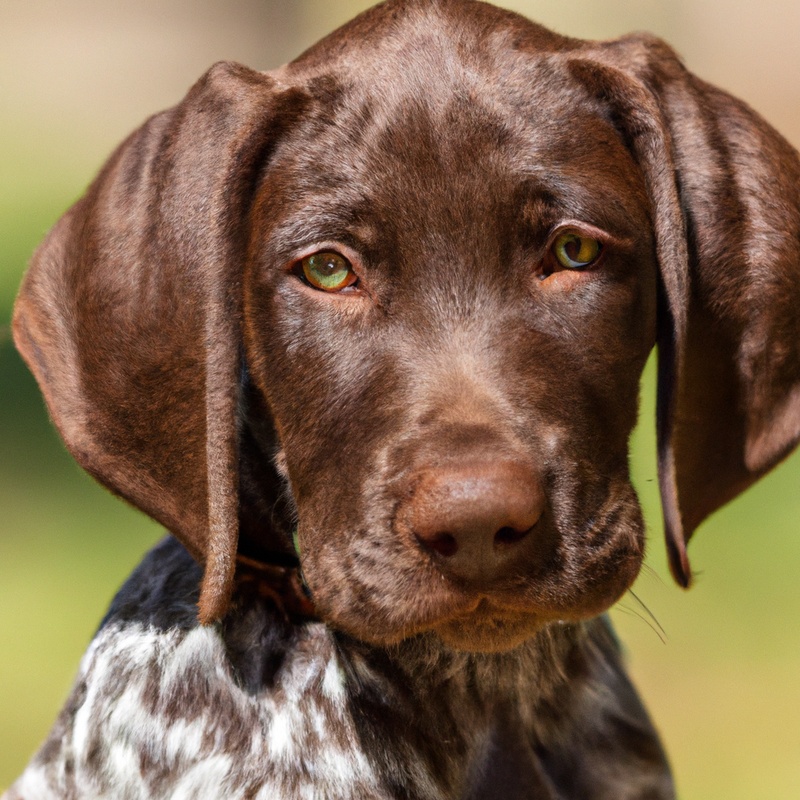
Seek professional help if needed
If you’re unsure about how to introduce your German Shorthaired Pointer to new environments, don’t hesitate to seek professional help. Sometimes, it’s best to rely on the expertise of trainers or behaviorists who can guide you through the process.
They can provide personalized advice and techniques tailored to your dog’s specific needs.
Be consistent with your training and introductions
When it comes to introducing your German Shorthaired Pointer to new environments, it’s important to be consistent with your training and introductions. First and foremost, establish a routine and stick to it.
This means consistently using the same commands and cues, and rewarding your dog for good behavior.
When introducing your dog to new environments, take it slow and gradually expose them to new sights, sounds, and smells. Remain calm and confident, as your dog can sense your emotions.
By being consistent in your training and introductions, you’ll help your German Shorthaired Pointer feel more secure and comfortable in unfamiliar surroundings.
Common Challenges and Solutions
Fear and anxiety in new environments
Fear and anxiety in new environments can be common for German Shorthaired Pointers (GSPs). These dogs are known to be sensitive, and it is natural for them to feel uneasy when faced with unfamiliar places or situations.
When your GSP displays fear or anxiety, it’s important to approach the situation with patience and understanding.
One way to help your GSP overcome their fear is by gradually exposing them to new environments. Start by introducing them to low-stress environments, such as quiet parks or low-traffic areas.
As your dog becomes more comfortable, gradually increase the level of stimulation and exposure to new places.
Creating a positive association with new environments is also key. Bring along their favorite toys or treats when you introduce them to a new place.
This can help distract them and associate the environment with positive experiences.
Keeping a calm and confident demeanor yourself is crucial. Dogs can pick up on our emotions, so if you’re anxious or tense, it can escalate their fear.
Stay calm and provide reassurance to your GSP, showing them that there’s nothing to be afraid of.
Aggression towards new people or animals
Aggression towards new people or animals can be a common challenge when introducing a German Shorthaired Pointer to new environments. It’s important to address this issue to ensure a safe and positive experience for everyone involved.
First and foremost, it’s crucial to understand that aggression can stem from fear or a lack of socialization.
If your dog is exhibiting aggressive behavior, it’s essential to seek the help of a professional dog trainer or behaviorist. They can assess the situation and provide guidance tailored to your specific dog.
In the meantime, there are a few steps you can take to help manage aggression in your German Shorthaired Pointer.
It’s important to keep introductions gradual and controlled. Start by introducing your dog to new people or animals in a neutral and controlled environment, such as a park or a quiet area.
Always ensure that your dog is on a leash for safety.
Another crucial aspect is to reward positive behavior and discourage aggressive behavior. Use treats or praise to reinforce good behavior, such as calm and friendly interactions with new people or animals.
If your dog starts to display aggression, redirect their attention to something positive or remove them from the situation.
Overexcitement and lack of focus
When it comes to introducing your German Shorthaired Pointer to new environments, two common challenges you might face are overexcitement and lack of focus. First and foremost, overexcitement can make it difficult for your dog to stay calm and focused when entering unfamiliar places.
This can lead to jumping, excessive barking, and difficulty following instructions.
To address this, it’s important to establish a calm and confident demeanor yourself. Take it slow and gradually expose your dog to new environments, allowing them to adjust at their own pace.
Additionally, lack of focus can be a challenge when introducing your dog to new surroundings.
Dogs naturally have shorter attention spans, and new environments can be distracting. To combat this, incorporate regular training sessions in various locations to help your dog develop better focus and concentration.
Start in a quiet, low-distraction area and gradually increase the level of distractions as your dog becomes more comfortable and focused.
By implementing these strategies, overexcitement and lack of focus can be addressed when introducing your German Shorthaired Pointer to new environments. Remember to be patient and consistent, and with time, your dog will become more confident and adaptable in different situations.
Lack of progress in introductions
If you find that your German Shorthaired Pointer is not making progress when introduced to new environments, there are a few things to consider. First and foremost, take it slow and do not rush the process.
Dogs can be sensitive to change, so allowing them time to acclimate is key.
Another factor to consider is the level of socialization your dog has had. Lack of progress may indicate a need for more exposure to different people, animals, and environments.
Gradually exposing your dog to new situations can help build their confidence and reduce anxiety.
Additionally, ensure that you’re using positive reinforcement techniques during introductions. Reward your dog for calm and relaxed behavior, and avoid punishments or forceful methods.
This will create a positive association with new environments and motivate your dog to make progress.
It’s also important to remember that every dog is different. Some may take longer to adjust than others.
Patience and consistency are key.
If you’re still struggling, consider seeking guidance from a professional dog trainer or behaviorist who can offer personalized advice and support.
Tips for addressing common challenges
Here are some tips to help you address common challenges when introducing your German Shorthaired Pointer to new environments:
- Gradual exposure: Start by introducing your dog to new environments gradually. Begin with quieter, less stimulating places before moving on to busier areas. This will help your dog ease into new surroundings and prevent overwhelming experiences.
- Positive reinforcement: Use positive reinforcement techniques, such as treats and praise, to reward your dog for calm and confident behavior in new environments. This will help build positive associations and boost their confidence.
- Leash training: Ensure your dog is well-trained on a leash before introducing them to new environments. This will give you better control and allow you to guide them through unfamiliar situations.
- Socialization: Regularly expose your dog to various people, animals, and environments from a young age. This will help them develop good social skills and become more adaptable to new situations.
- Patience and consistency: Remember that every dog is different, and it may take time for your German Shorthaired Pointer to feel comfortable in new environments. Be patient, consistent in your training, and celebrate their progress.
By following these tips, you can help your German Shorthaired Pointer feel more at ease when encountering new environments and navigate common challenges with confidence.
Frequently Asked Questions (FAQs)
How long does it take for a German Shorthaired Pointer to adjust to new environments?
When it comes to how long it takes for a German Shorthaired Pointer to adjust to new environments, it really varies from dog to dog. Some may adapt quickly, while others may take more time.
Each dog has their own unique personality and temperament, so there’s no set timeframe.
First and foremost, it’s important to be patient and understanding during this adjustment period. Give your German Shorthaired Pointer time to explore and get comfortable in their new surroundings.
To help ease the transition, gradually introduce them to new environments in a slow and controlled manner.
Start with short visits, and gradually increase the duration and complexity of the experiences. This will allow your dog to build confidence and familiarity at their own pace.
Provide positive reinforcement and rewards for good behavior during these outings.
This will help your German Shorthaired Pointer associate new environments with positive experiences.
Can I introduce my German Shorthaired Pointer to new environments at any age?
Absolutely! You can introduce your German Shorthaired Pointer to new environments at any age. They are adaptable and versatile dogs.
However, it is important to introduce them gradually and positively.
Start with shorter outings and slowly increase the duration and complexity of the environments. Provide plenty of positive reinforcement and rewards to help them feel comfortable and confident in new situations.
What if my German Shorthaired Pointer doesn’t get along with other animals in new environments?
If your German Shorthaired Pointer doesn’t get along with other animals in new environments, there are a few things you can do to help them adjust. First and foremost, it’s important to introduce them to new animals slowly and in a controlled manner.
This allows them to gradually get used to each other’s presence without feeling overwhelmed.
One strategy is to start with short and supervised interactions, gradually increasing the duration as they become more comfortable. It’s also helpful to provide positive reinforcement for good behavior, such as treats and praise, to encourage positive associations with other animals.
Additionally, proper socialization at a young age is key.
Early exposure to different animals and environments can help prevent issues in the future. If you’re unsure how to go about this, working with a professional dog trainer or animal behaviorist can provide guidance and support.
Is professional training necessary for introducing my German Shorthaired Pointer to new environments?
No, professional training is not necessarily required for introducing your German Shorthaired Pointer to new environments. However, it can be beneficial, especially if you are unsure or inexperienced in handling such situations.
Professional trainers have the knowledge and expertise to help your dog adapt and feel comfortable in new surroundings.
They can provide guidance on proper socialization, behavior management, and desensitization techniques. Ultimately, the decision to seek professional training depends on your confidence and ability to effectively introduce your dog to different environments.
How can I ensure my German Shorthaired Pointer’s safety during introductions?
Introducing your German Shorthaired Pointer (GSP) to new environments can be an exciting but also challenging experience. Ensuring your GSP’s safety during these introductions is crucial.
First and foremost, always keep your GSP on a leash when introducing them to new places.
This will give you control and prevent them from running off or getting into potential danger. Additionally, observe your GSP’s body language closely.
If they show signs of stress or discomfort, such as excessive panting or trembling, it’s important to give them space and time to adjust.
Lastly, be mindful of any potential hazards in the environment, such as toxic plants or aggressive animals, and keep your GSP away from them. By following these tips, you can help keep your GSP safe during introductions to new environments.
Final Verdict
Introducing your German Shorthaired Pointer to new environments is of utmost importance for their well-being and overall development. By following the steps outlined in this article and implementing the tips provided, you can ensure a successful introduction process.
Remember, patience, positive reinforcement, and consistency are key.
While challenges may arise, seeking professional help when needed and addressing common issues will help you overcome any obstacles. Rest assured that with time, your German Shorthaired Pointer will adjust and thrive in new environments, leading to a happy and fulfilling life for both of you.

